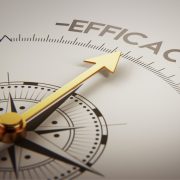Many of us retain a linear and sequential image of the entrepreneurial process. A hero entrepreneur looks for market gaps or identifies consumer dissatisfactions, designs a solution and takes it to market. The process is intimidating: it requires singular inspiration, breakthrough thinking, grit, money and luck, and takes a long time.
In fact, entrepreneurship is not about solutions designed by a few, it is about interactions between people, the more the better. Innovating is not a process, it is a set of collaborative practices taking place on interconnected networks.
The First Collaborative Car.
Recently, thousands of individuals around the world came together to design a new car from scratch. They did so through a project activated by Fiat called “Fiat Mio – the first collaborative car”[1]. It was a deliberate attempt to overturn the traditional development process by interconnecting with as broad a network of people as possible to gather and shape innovation ideas. Thousands of ideas from over 100 countries were gathered, and integrated into a new car launch. Moreover, all the ideas were placed in Creative Commons, so that they remain available to all, a complete inversion of the traditional route of secrecy and patent protection.
Research conducted by Dr Cristina Mele and Dr. Tiziana Russo Spena (both of University of Naples Federico II, Department of Economics, Management and Institutions, Napoli, Italy) points to this and other examples of interconnectedness as the opening of a door to an emergent and entirely new and revolutionary concept of economic, social and cultural innovation. It’s something we all do together.
Food As Social Discourse.
Think of the food industry today. Actors in the food industry, including consumers but also including farmers and food activists and nutritionists and athletes and bloggers and TV and internet personalities, increasingly spur on a social and cultural process that develops new ideas, new standards, and new perceptions of quality, authenticity, legitimacy and value. Organic, gluten free, grass fed, and low fat foods were not a single person or company’s idea offered to the market. They emerged from the interaction of innumerable participants. Food is social discourse and social practice. Food innovation is an interconnected social effort, the application of different people’s competencies and interests through resource and knowledge integration.
This rolling innovation in the food industry, propelled by the new interconnections of multiple players with different roles sharing new knowledge and combining it in new ways with established expertise, illustrates what Dr. Mele calls “connections-in-action”. Entrepreneurship is the continuous co-construction and co-creation that results from the interconnections among a network of market actors, actions, contexts and resources. Innovation is the emergent outcome. Rather than a breakthrough action of one entrepreneur or one R&D lab or one company, innovation is “a shared knowing and doing”.
The Four Practices Of Digital Entrepreneurs.
Digital entrepreneurs are the agents who integrate the activities through which market innovation emerges. Pursuing specific actions, they enable four practices that shape innovation:
Engaging: connecting market actors who are seeking opportunity to co-create innovation. These actors could be designers, thinkers, engineers, inventors, teachers, or parents, or play in any one of a myriad of roles. They have talent, they have an interest in making things better, and they are open to collaborate and share and develop ideas and projects. Engagement is the practice of expanding the variety of actors and roles – the more the better – in any collaboration to capture new possibilities for novelty.
Exploring: the continuous dynamic of knowledge creation and recombination through shared interaction – knowing and learning together. This is where problem solving occurs, through interconnected creativity, knowledge and competency.
Exploiting: the combination and transformation of knowledge in new contexts, seeking ways to re-use and re-combine knowledge and technologies. Collaborators modify and extend their concepts into new opportunities, translating knowledge in new ways and developing commercial concepts.
Orchestrating: ensuring, out of all the possibilities, the best flow of actions and resource integration. Orchestrators frame the network of collaborators to promote the most effective linkages and connections, mobilizing individuals to increase their personal empowerment and confidence, while also fostering community level speed and alignment.
Networking And Knowing.
Viewed together, these practices can be grouped into Networking and Knowing. Networking means all the ways of connecting people and resources. The emerging technologies of spontaneous order make it possible to bust the silos that previously impeded individual opportunity (such as the barriers between healthcare providers and patients in a healthcare system). Knowing means the shift of knowledge from object to action – a knowing that is co-constructed through the interaction of individuals (such as patients, doctors, researchers, medical specialists, data gatherers, etc) so that new common understanding can emerge.
Inno-mediaries.
Digital entrepreneurs are shaping markets as they create the new ways of developing, diffusing and using knowledge, and new ways to generate and promote innovation. Dr. Mele calls these digital innovators “inno-mediaries”. They encourage new innovators (consumers, communities, and experts) to enter into the co-creation of innovation by enabling new practices through the use of diverse resources.
Each individual one of us represents a critical component. The more we work at being interconnected, the more we contribute. We all should seek to be more knowledgeable, and better equipped for the collaborative economy. We should be active, constantly interacting, always crossing and blurring organizational and institutional boundaries. Everyone can be an inno-mediary.
[1] https://www.youtube.com/watch?v=UF6pXmt2-WU













